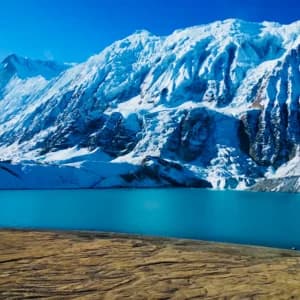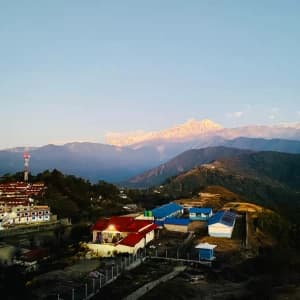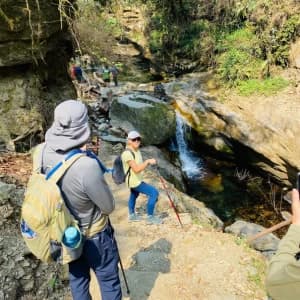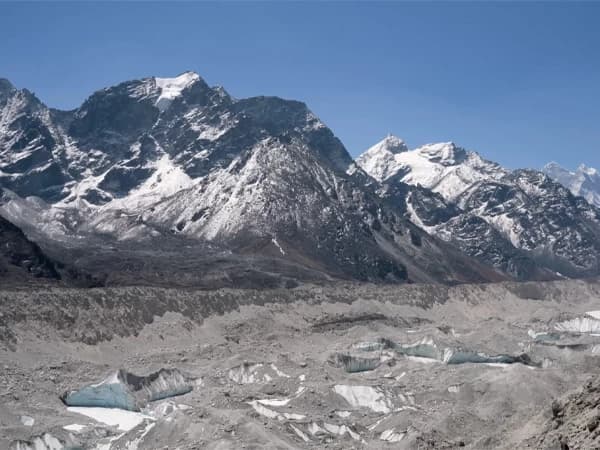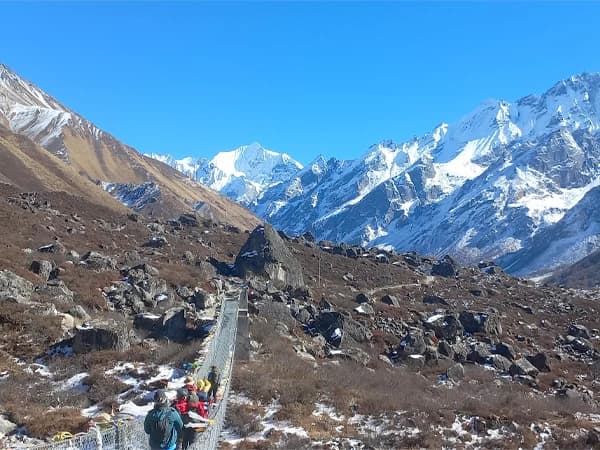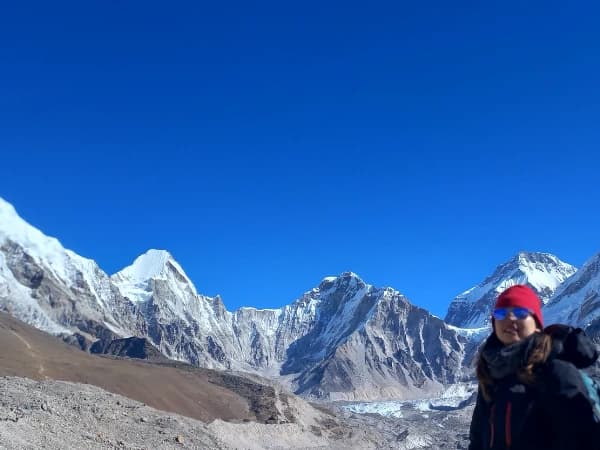Annapurna Base Camp Trek Permit
In order to begin your trek to Annapurna Base Camp you are required to get two permits, the TIMS card andACAP. Both of these permits are vital to making the Annapurna Base Camp Trek legal and safe. Just like most natural parks, you will find several checkpoints that are along the road where you will be required to display your permits.
- TIMS (Trekking Information Management Systems)
- ACAP Annapurna Conservation Area Project Permit
TIMS (Trekking Information Management Systems)
The TIMS permit is mandatory for all the trekkers trekking to any trekking area in Nepal. TIMS is one of the important permits for the Annapurna base camp to accomplish the trek successfully. It records the trekkers and therefore helps in safety and security throughout your journey. TIMS permits cost NPR 1,000(approx. USD 10) for group trekkers, and NPR 2,000 (about USD 20) for individual trekkers.
For the TIMS permit, you have to provide:
- A valid passport
- A passport photo
- Proof of your agency of trekking, if you are joining a group
The TIMS permit will be available at the offices of the Nepal Tourism Board, Kathmandu and Pokhara. If you are trekking through an agency that is registered, they would normally make the arrangements for the Annapurna Base Camp permit.
Annapurna Conservation Area Permit (ACAP)
ACAP is mandatory for all trekkers entering the Conservation Area of Annapurna. This permit contributes to nature and cultural heritage protection and promotes sustainable tourism practices in this area. ACAP costs for foreign trekkers are 3000 NPR, approximately $26 USD. You can obtain the ACAP from the offices of the Nepal Tourism Board or at the entry points to the conservation area.
As for any trek to the Annapurna region, TIMS and ACAP permits are mandatory for the Annapurna Base Camp Trek. These permits also assist in the documentation of the trekkers in the area, hence adding to the efforts of the conservation of this land of splendid scenery and the cultural value of the Annapurna region. Prepare all documents correctly and be ready for the incredible trek to Annapurna Base Camp.
Annapurna Base Camp Trek Difficulty
The Annapurna Base Camp Trek can be described, for the most part, as a moderately difficult adventure because of the altitude and terrain the trek involves, in addition to the duration one takes to get there. It rises to as high as 4,130 meters (13,550 feet), where altitude sickness may very well be the enemy of the climber, with acclimatization a key preventive factor against this kind of sickness. The duration of this trek generally lies between 10 to 15 days, depending on the structure of the route taken. Gaining altitude gradually, this allows rest days to fight off fatigue.
Annapurna Base Camp Trek covers a distance of about 110 km/ 68 miles, and most trekkers walk upwards of 6-8 hours daily, so the Annapurna Base Camp trek difficulty is semi-difficult, especially on uneven terrain. A steep ascent, rocky path, or narrow route requires good physical fitness and sure-footedness.
Another factor that determines the Annapurna base camp trek difficulty is weather, which can be pretty unpredictable, especially at much higher altitudes. For this reason, spring and autumn offer very stable conditions for trekking. While the trek is not a very technically demanding one compared to treks at higher altitudes, it does call for a considerable amount of physical and mental preparation
Many adventurers, when properly trained and geared with careful acclimatization, can make this spectacular Annapurna Base Camp Trek and enjoy the breathtaking beauty of the Annapurna region. Other key factors include trekking with a licensed guide and obtaining necessary permits, ensuring a safe, rewarding experience.
Best Time for Annapurna Base Camp Trek
While planning your trek to Annapurna Base Camp, the time becomes crucial. The best time for the trek to Annapurna Base Camp is Spring (March to May ) and Autumn (September to November). These two seasons differ in their own attractions, and knowing them will make your journey even more interesting.
Spring Season (March to May)
The spring season is one of the best times for the Annapurna Base Camp Trek. The weather starts getting warm, and accordingly, the rhododendron forests start blooming, painting everything around in a deep shade of red and pink, making a breathtaking background for your adventure. The temperature in the daytime can reach up to 12 to 20 degrees Celsius, while at night it starts to chill down. The skies are usually clear and offer brilliant views of the grand Himalayas. The flowers present along the trails add colors while making the Annapurna base camp trek even more commendable. Spring is a peak season however, you can expect many trekkers on your way and at scenic viewpoints and teahouses. Despite the crowded scenario, beautiful scenery and a boisterous atmosphere make the Annapurna Base Camp Trek truly an experience worth making.
Autumn Season (September to November)
The autumn season is another perfect time to plan for the Annapurna Base Camp Trek. It has dry and stable weather during the daytime, and temperatures fluctuate between 10 and 18 degrees Celsius; thus, conditions for trekking are comfortable. The skies are clear, providing great views of the Annapurna range, and photographers and nature lovers will be in heaven. The recent monsoon ensures trails are well-maintained, while lush greenery adds to the beauty of the scenery. Usually, autumn sees fewer trekkers than spring, which provides for a more tranquil trail experience. So, Autumn is also the best time for a trek to the Annapurna Base Camp, for those who wish to have complete solitude and enjoy the beauty of the region.
Other Seasons Trekking In Annapurna Base Camp
Other than the best season for the Annapurna Base Camp trek, i.e., spring and autumn, there are other seasons that have their own set of problems. The winter, starting from December to February, is pretty severe with cold temperatures, and the possibility of snow on the ground makes the trails icy and difficult to negotiate. However, few trekkers hit the trails at this time of the year since it requires careful planning and experience to navigate these conditions safely. On the other hand, heavy rainfall characterizes the monsoon season, a factor that makes the trails muddy and prone to landslides, thus complicating your trek. Besides, clouds obscure the visibility, making it less ideal for trekking.
Generally speaking, the best time for trekking the Annapurna Base Camp Trek is during Spring and Autumn. During both of these seasons, the weather remains favorable, with views and trails being very impressive and accessible, respectively. Whichever time you decide to embark Annapurna Base Camp Trek, your preparation and acclimatization will determine how successful your trek turns out to be. If you choose the right time or season, you could experience the full beauty and culture this region has in store for you and take memories along with you forever.
How to Prepare for the Annapurna Base Camp Trek?
Preparation for the Annapurna Base Camp trek is pretty crucial in order to ensure you face no more problems than absolutely necessary on this amazing trek. While that may sound daunting, doing your research simplifies the process. Here are five steps to prepare for the Annapurna Base Camp Trek.
- Step 1: Booking
- Step 2: Preparing the Document
- Step 3: Physical and Mental Training
- Step 4: Consult Your Doctor and Pack
Step 1: Booking
Choose your trekking date and contact us for a booking. You can easily book the Annapurna Base Camp Trek 2025 from our website. It only takes a few minutes to fill out the booking form and pay the partial or full amount for confirmation. Our team member will contact you through a confirmation email and proceed with further preparation, along with additional requirements.
Step 2: Preparing the Document
Once your booking is confirmed, make arrangements for your travel documentation. Get yourself travel insurance that covers medical expenses and emergency air evacuation. If you get one, please send us a copy. Make sure that your passport validity dates at least six months beyond your return date from Nepal, and a Nepalese travel visa from either the Nepalese Embassy or upon your arrival at Tribhuvan International Airport in Kathmandu. Please note that on-arrival visas are available only for certain nationalities. Keep photocopies of your travel insurance and passport safe. The requirements regarding the Annapurna Base Camp Trek permit will be dealt with prior to your arrival by our team.
Step 3: Physical and Mental Training
We recommend four weeks of both physical and mental preparation before embarking on the trek. The Annapurna Base Camp Trekis not that strenuous, but any person not undertaking exercises can face difficulties while trekking uphill every day for six hours continuously. Regularly start going for walks, do some cardio exercises, and strengthen your muscles. Mentally, prepare yourself for the region you are going to travel to. Keep yourself in a peaceful state of mind, this will help you set your expectations about the trek.
Step 4: Consult Your Doctor and Pack
Please consult with your doctor regarding any health issues associated with high altitude and environmental changes. Ask for medications for altitude sickness and common diseases. If you have any allergies or medical conditions, please let us know. After confirming your trek, we will forward the packing checklist to help you prepare for the necessary trekking equipment. Buying seems expensive, you can rent many of these in Kathmandu.
Step 5: Departure
Please note that international flights to and from Kathmandu are not included in the trek cost, so these flights should be booked separately. Please make sure you arrive at least one day early in Kathmandu to launch your trek smoothly.
Altitude Sickness and Remedies on the Annapurna Base Camp Trek
While on the trek to ABC, you will be as high as 4130 meters above sea level. These altitudes may cause AMS, or Acute Mountain Sickness, and could become a problem quite easily. The heights are high, and all this could happen to anyone regardless of age and physical condition.
Symptoms of Altitude Sickness
Altitude sickness is a change in the rate at which the organism adjusts to environmental conditions due to the change in air pressure. Symptoms can therefore vary from mild complaints to serious manifestations and are characterized by ordinary conditions such as headaches, nausea or vomiting, fatigue, dizziness, or difficulty in breathing.
How to Avoid and Overcome High Altitude Illness
This paper aims to discuss the prevention and treatment of acute mountain sickness as crucial measures in the trekking session. Here are some practical tips and remedies to consider:
- The golden rule is the gradual rise in altitude. Take more rest days and time for recovery when ascending to a much higher altitude.
- Try to intake 3-4 liters of water every day. Intoxicants like alcohol and caffeine are better avoided because they dehydrate your body.
- A diet with plenty of carbohydrates can help energize the body with good nutrition and help your system acclimate easily.
- Use the consultation with your doctor about taking Diamox or Acetazolamide. This will hopefully prevent altitude sickness by increasing oxygen in the blood.
- Pay close attention to your body and do not overexert yourself. Frequent rest will allow your body to recover and acclimate.
- If you begin to feel seriously ill, supplementing with extra oxygen may help you until you are able to make it to a lower elevation.
- If the symptoms worsen, it is important that one walks down to a lower height where more oxygen can be obtained.
Understanding altitude sickness and some of these strategies will make your time on the Annapurna Base Camp Trek safer and more rewarding, with breathtaking views of the Himalayas.
Accommodation during the Annapurna Base Camp Trek
Accommodations during the Annapurna Base Camp Trek range from very basic tea houses to more modern, comfortable facilities catering to the different needs of various trekkers. Basic tea houses and lodges offering basic to more decent stays are available. Basic ones normally have simple rooms with beds, blankets, and shared bathrooms. In contrast, comfortable lodges could have better facilities, including attached bathrooms and hot showers. Although limited, they might turn out to be refreshing luxuries after a day's hard trek. Most of the tea houses have communal dining areas where trekkers can enjoy a variety of meals from traditional Nepali Dal Bhat to international cuisine.
Other than sleeping facilities, most tea houses offer Wi-Fi and charging facilities; still, most of these extras are offered at an extra charge. The lodges are well-placed along the route, offering spectacular views of the Annapurna vistas and allowing a warm atmosphere in which to get to know fellow trekkers. This social side of things adds enormously to the experience of the trek, as adventurers tell tales and share advice over dinner. Whether you are the person who books your accommodation in advance or finds a place to lodge at the spot, options all the way on the Annapurna Base Camp trek promise a comfortable and memorable experience for all who venture into this breathtakingly beautiful region.
Food Available During the Annapurna Base Camp Trek
The food in Annapurna Base Camp nourishes its trekkers with varied food to satisfy their needs. Most famous and popular, Dal Bhat is heavy and nutritious, comprising basic energy while hiking, often available with unlimited refills. Other local delicacies include momos, succulent dumplings, and the perfect snack, and Thukpa, a hot noodle soup, replacing fatigue after a long trek.
The same variety applies to breakfast, including eggs and toast, pasta, pancake toppings of honey, and fruits. Most tea houses are welcoming, offering vegetarian and vegan meals to meet whatever demand there might be. Overall, the tapestry of food on offer along the trek makes the experience even more worthwhile, with adventurers able to feast on great local cuisine against stunning mountain backdrops.
Annapurna Base Camp Trek Travel Insurance
Travel insurance throughout the ABC trek should be regarded as one of the most important preparations. The insurance will protect you from all risks and all the incidentals that may occur to you on your trip to the Himalayas. The following outlines in detail what the travel insurance must cover regarding the Annapurna Base Camp:
Medical Coverage
Altitude Sickness: In a normal trekking situation, the altitude rises up to 4,130 meters (13,550 feet), thus putting you at risk of getting acute mountain sickness. Make sure your insurance policy protects you from such sicknesses and includes helicopter evacuation if required. General Health Issues: In the course of trekking, one might encounter various medical complications such as fractures, accidents, and other illnesses at high altitudes.
Emergency Evacuation
Health complications or accidents during travel are catered for by paying for the emergency Evacuation. This is more so when you are in the Annapurna region, and accessing the hospital may be a little challenging.
Trip Cancellation and Interruption
It covers the nonrefundable airline and accommodations expenses in case of unfortunate contingencies that include cancellation of vacation or trip interruption due to serious illness, family emergencies, or natural disasters.
Coverage for Lost or Stolen Personal Belongings
Trekking usually entails carrying valuables like cameras, smartphones, and equipment. Travel insurance may provide coverage against loss, theft, or damage of such items taken along on a trip.
Travel Delay Coverage
If inclement weather or even a natural disaster means that your flights are delayed, causing you much inconvenience in your travel itinerary, insurance can cover extra accommodation, food, and transportation.
Repatriation
In extreme cases, when you need to go back to your home country for treatment or because of any severe incident, travel insurance covers the cost of repatriation.
Tips on Selecting Travel Insurance for the Annapurna Base Camp Trek
- Quite carefully read through the terms of the policy; there are parameters of coverage and cases when insurance is not provided.
- Ensure that your policy states that you will be trekking at a high altitude because this is not included in normal travel insurance.
- Being an insurance policy, one needs to find a policy as per one’s requirement and budget among the available insurance companies.
- It is also important to give you copies of your insurance policy that you have, the phone numbers of those on the rush list, as well as the information on claims.
- This makes travel insurance for the Annapurna Base Camp Trek a very important part of preparation.
- The safety in personal finance it offers, while one spends time on this trek, focused on enjoying breathtaking landscapes and special experiences, is simply amazing.
- Make sure you choose a policy that best suits your requirements, and you're good to go on this lifetime adventure.
Annapurna Base Camp Trek Distance
Annapurna Base Camp Trek covers a distance of about 110 km or 68 miles on a round circuit. Starting from Kathmandu and tracing through to Pokhara, ABC trekking presents stunning scenery of the Annapurna range. With varied terrains and elevations, the journey may be suitable for any level of trekkers. However, the total distance includes the trek to Annapurna Base Camp, and the return is promising to be an unforgettable adventure in one of the most beautiful parts of Nepal. Preparation is about successfully making a complete trek.
Annapurna Base Camp Trek Packing List
Following is a detailed list of essentials you need to pack in your luggage to start preparing for the Annapurna Base Camp Trek:
Travel Documents
- Valid Passport (with 2 to 3 photocopies)
- Airline Tickets & Trip Itinerary
- Nepal Visa (available for most nationalities upon arrival)
- 4 Passport-Sized Photos (for permits, local SIM card, etc.)
- Travel Insurance (for medical and trip cancellation, including evacuation costs)
- Cash & Credit Cards- at least some dollars.
Headwear
- A brimmed hat or sun cap
- Sunglasses
- Buff/neck warmer
- Knit hat- preferably fleece or wool
- Balaclava- for cold weather
- Bandana or headscarf
Upper Body Wear
- Lightweight thermal tops
- Long/short-sleeved polypropylene shirts
- Fleece pullover or jacket
- Waterproof jacket
- Down jacket
- Insulated jacket
- Soft jacket
Handwear
- Lightweight gloves
- Heavyweight gloves or mittens
Bodywear
- Hiking pants
- Fleece pants
- Light thermal trousers
- Underwear
- Hiking shorts
Footwear
- Trekking boots
- Hiking socks
- Trekking sandals
- Cotton socks
- Gaiters (Optional)
Trekking Equipment & Gear
- Trekking Backpack-50 to 70 liters recommended
- Sleeping Bag (rated for cold weather)
- Trekking Poles (optional but helpful)
- Head Torch (extra batteries)
- Duffel Bag (to carry items)
- Raincoat
- Water Bottle (1 to 2 liters)
- Thermos (for hot drinks)
- Garbage Bag (waste disposal)
First Aid & Medicines
- Antibiotics
- Painkillers
- Cough lozenges
- Bandages and plasters
- Foot powder
- Altitude sickness medication (consult your doctor)
- Water purification tablets
- Oral rehydration sachets
- Sunscreen
- Lip balm
- Insect repellent
- Hand sanitizer
- Wet wipes/baby wipes
Toiletries & Personal Hygiene
- Toothbrush & Toothpaste
- Soap & Shampoo
- Dry Shampoo
- Quick-Drying Towel
- MultiPurpose Soap
- Deodorant
- Nail Brush & Clippers
- Hairbrush
- Face Flannel
- Moisturizing Cream
- Toilet Paper (packed in a resealable plastic bag)
Miscellaneous Items
- Contact Lenses & Power Glasses
- Flasks
- Umbrella (optional)
- Padlocks (to lock your bags)
- Multitools
- Power Bank
- Universal Adapter
- Camera (if you have the budget for it)
- Swiss Knife (if you have the budget for it)
- Activated Charcoal (if you have the budget for it)
- Stuff sacks/dry bags
Extras for Men
- Small mirror
- Razor and shaving cream
- After shaving gel or lotion
- Pee bottle
Extras Women
- Urination device, i.e., Shewee
- Pee cloth
- Feminine hygiene wipes
- Menstrual cups
- Tweezers
- Sanitary napkins
Final Tips for Annapurna Base Camp Trek
- Your passport should be valid for at least six months beyond your departure date.
- Do your packing, but remember to pay attention to weight and bring only what is necessary.
- Consult your guide for proper medical advice concerning altitude sickness, among others.








